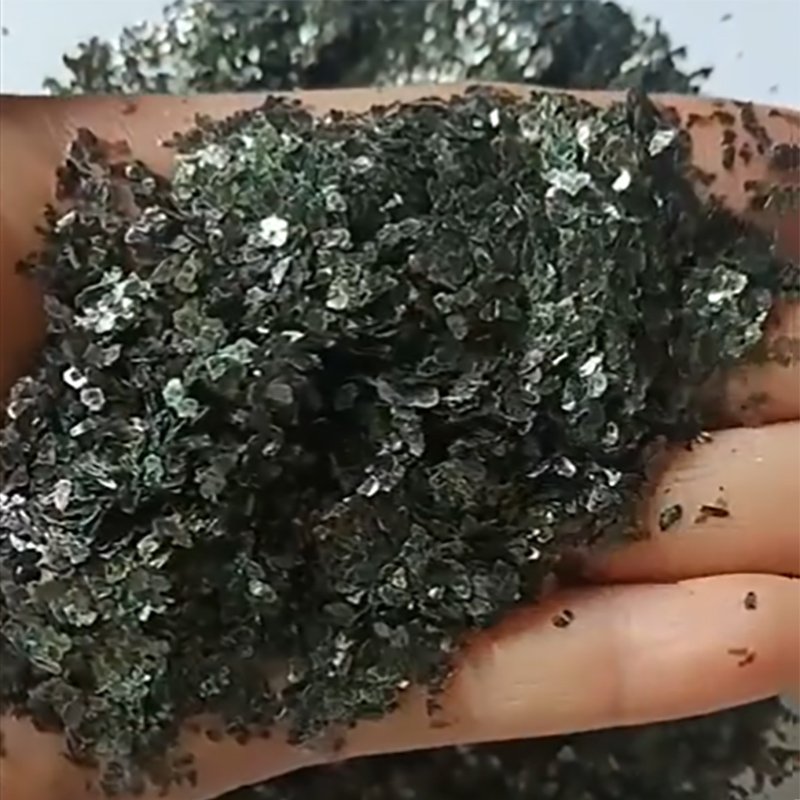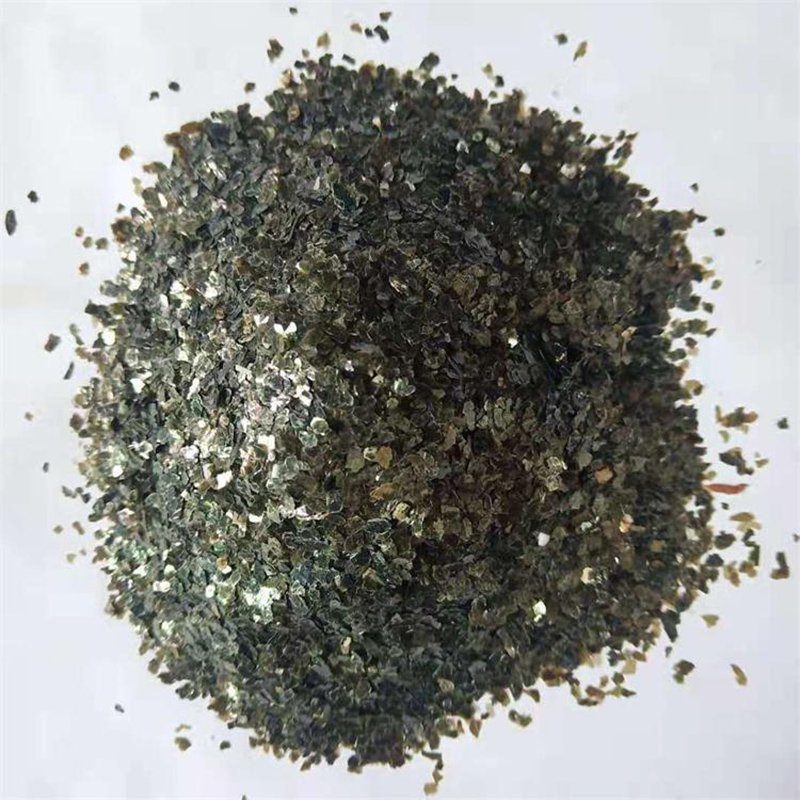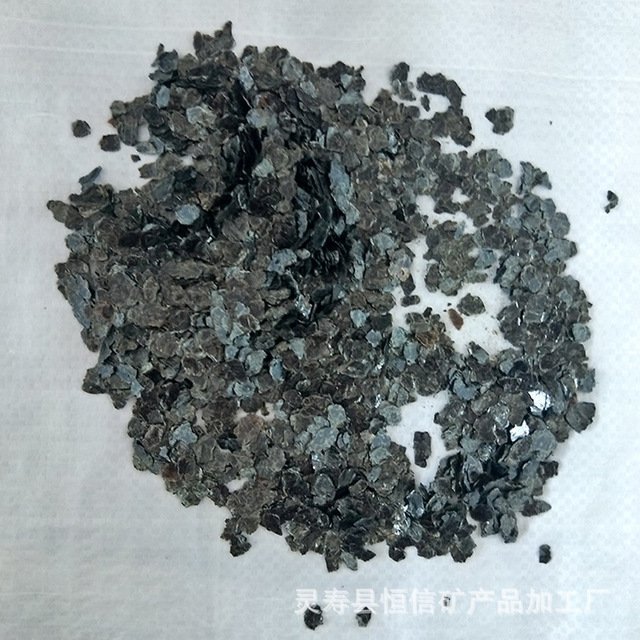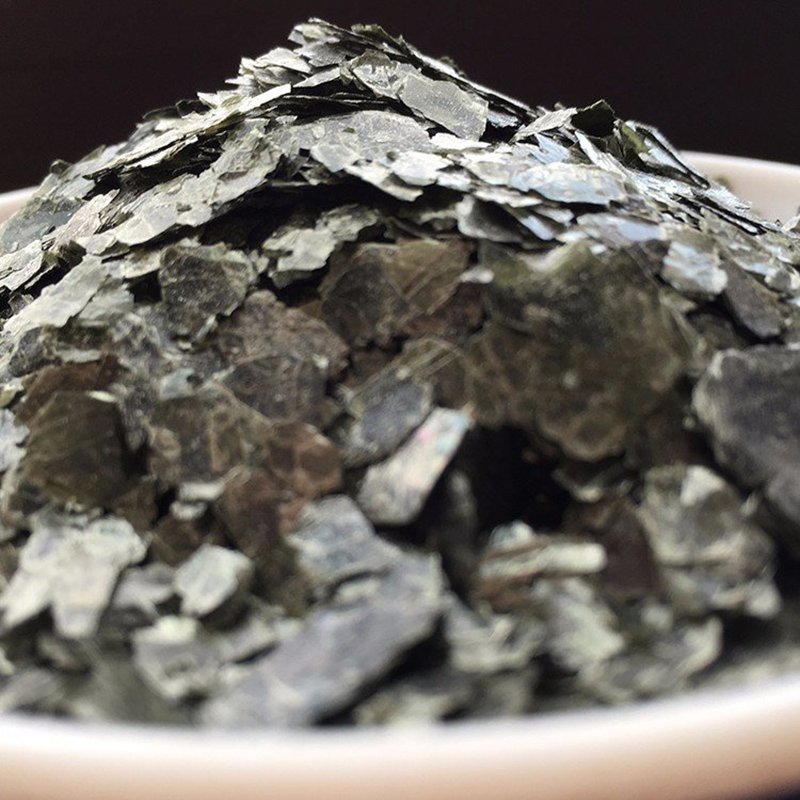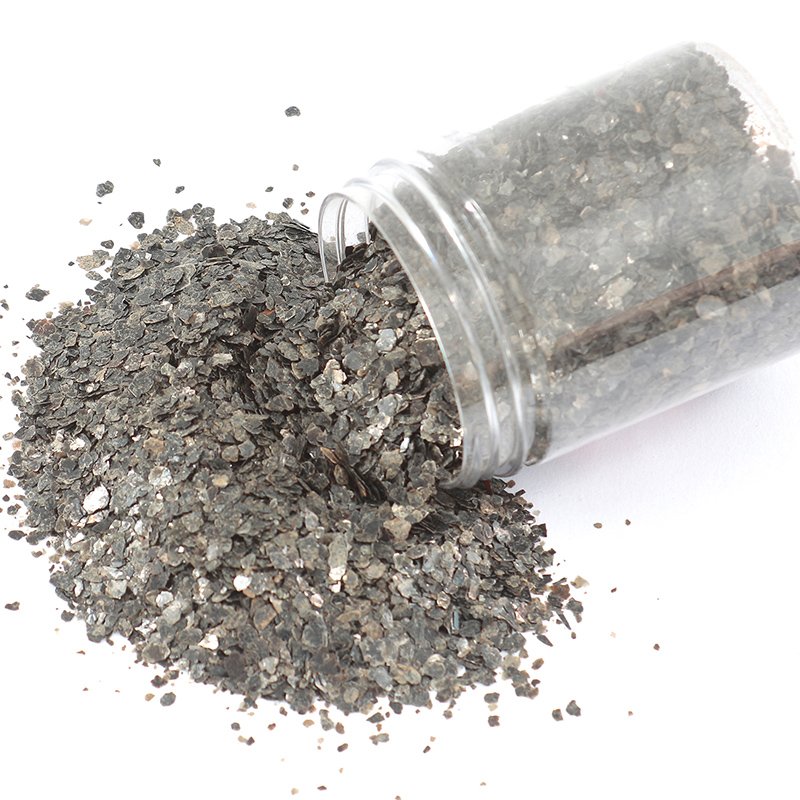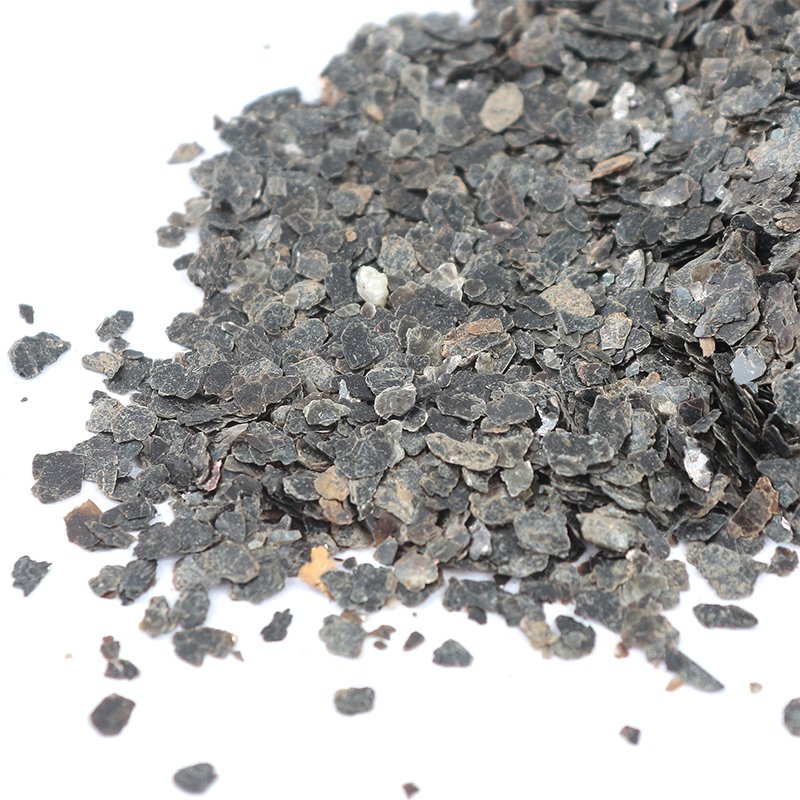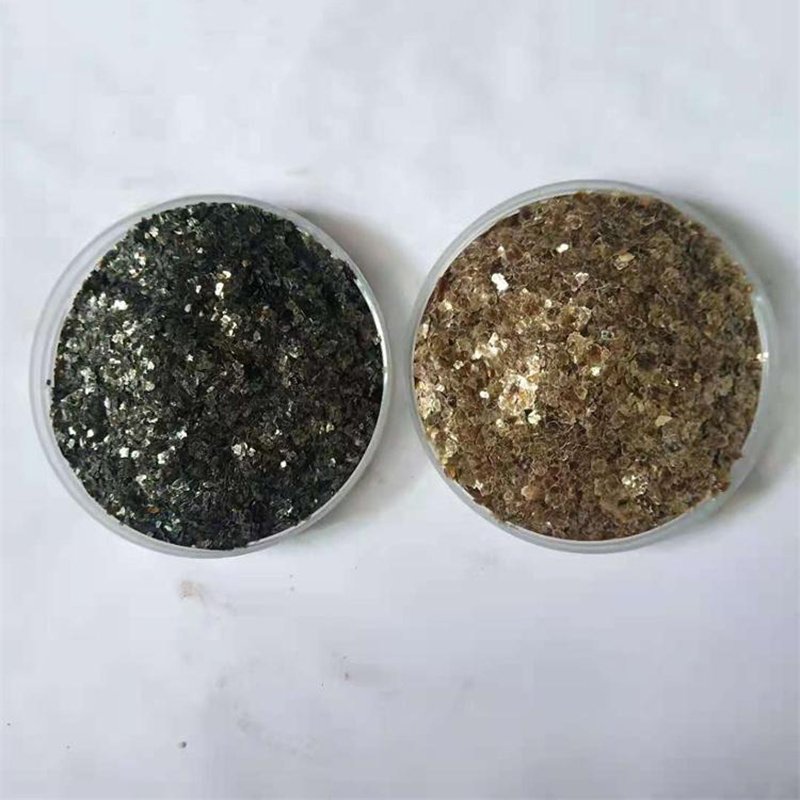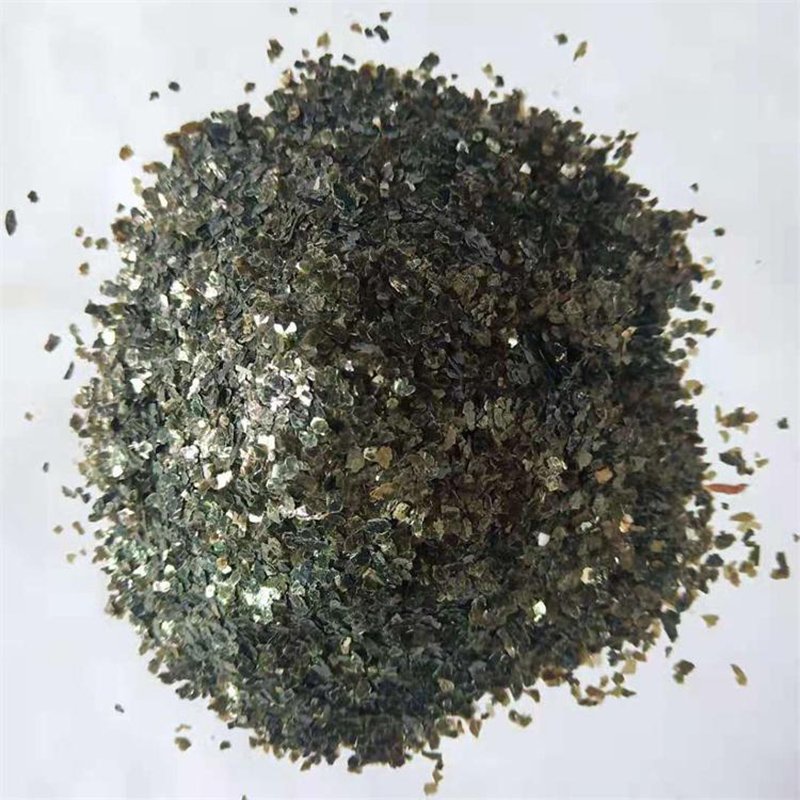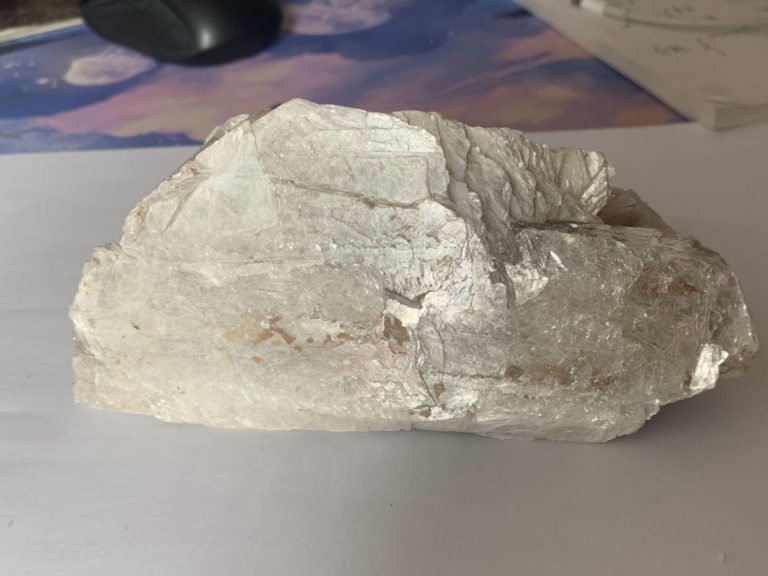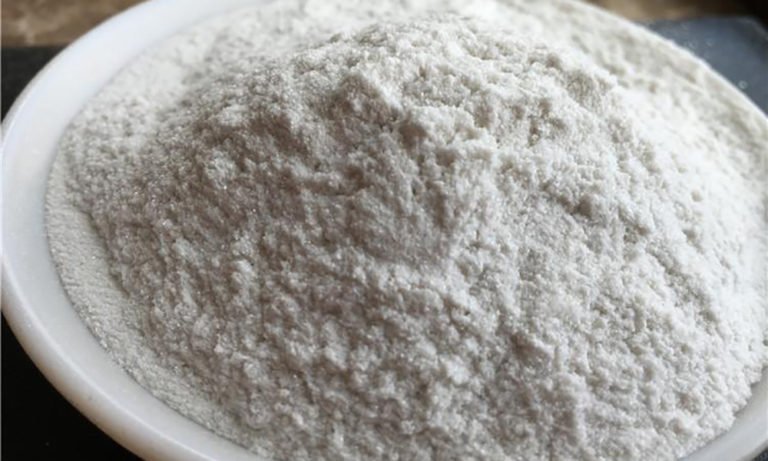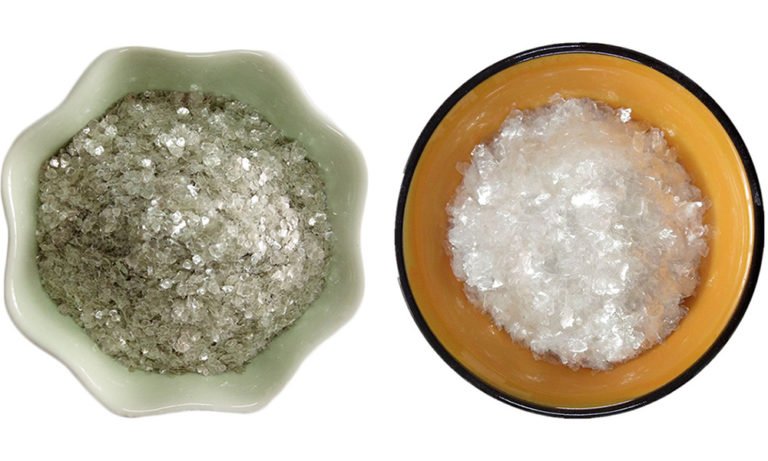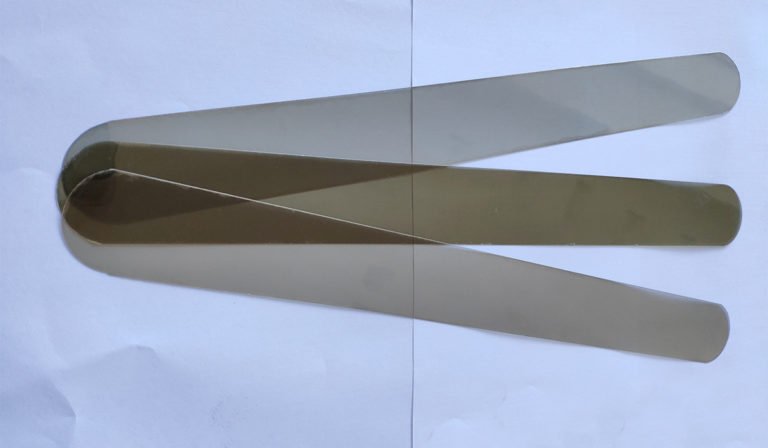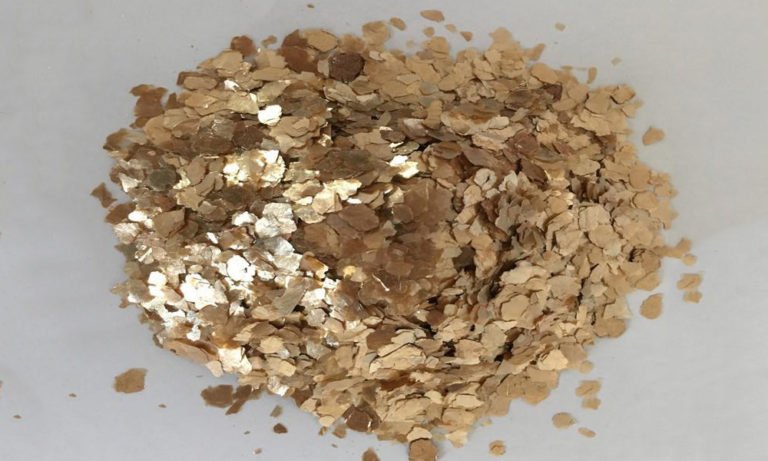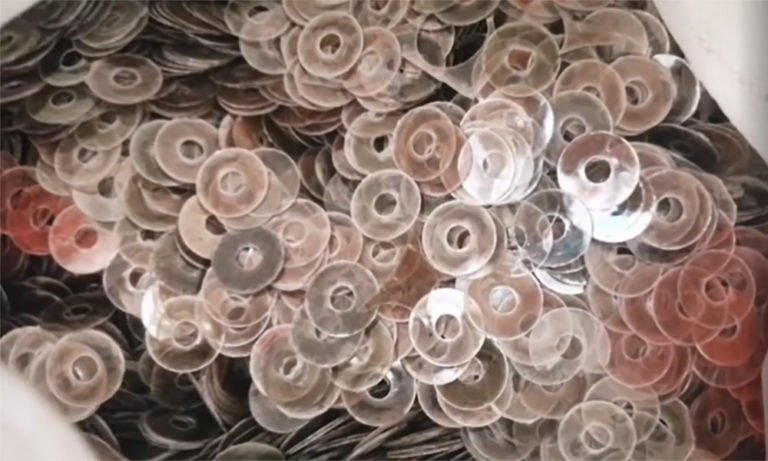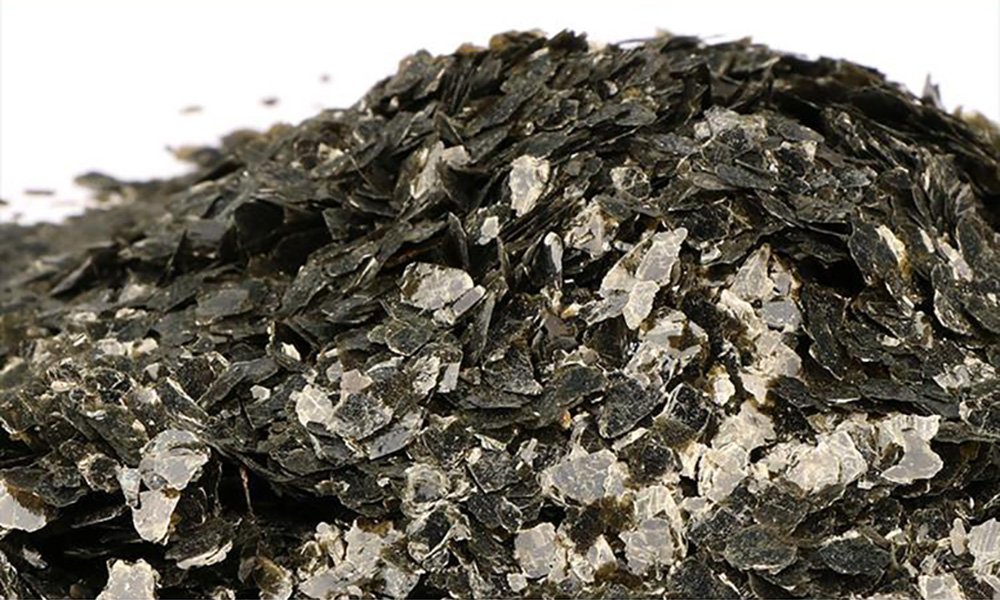
Natural Black Mica Flakes
Biotite is a black variety of mica, opaque. Applied as an additive for paints and plasters as well as topping for tar paper. Used for decorating products. Thermal and electrical insulator.
- Chemical composition: K2(Mg,Fe)6(Al2Si6O20)(OH)4 – potassium iron magnesium aluminum silicate hydroxide
- Color: Black, dark brown, dark green, reddish black.
- Streak: White
- Hardness (Moh’s Scale): 2,5 – 3,0
- Transparency: Translucent to opaque. Thin flakes will always be translucent if held up to the light.
- Luster: pearly
- Specific gravity: 2,7 – 3,1 g/cm3
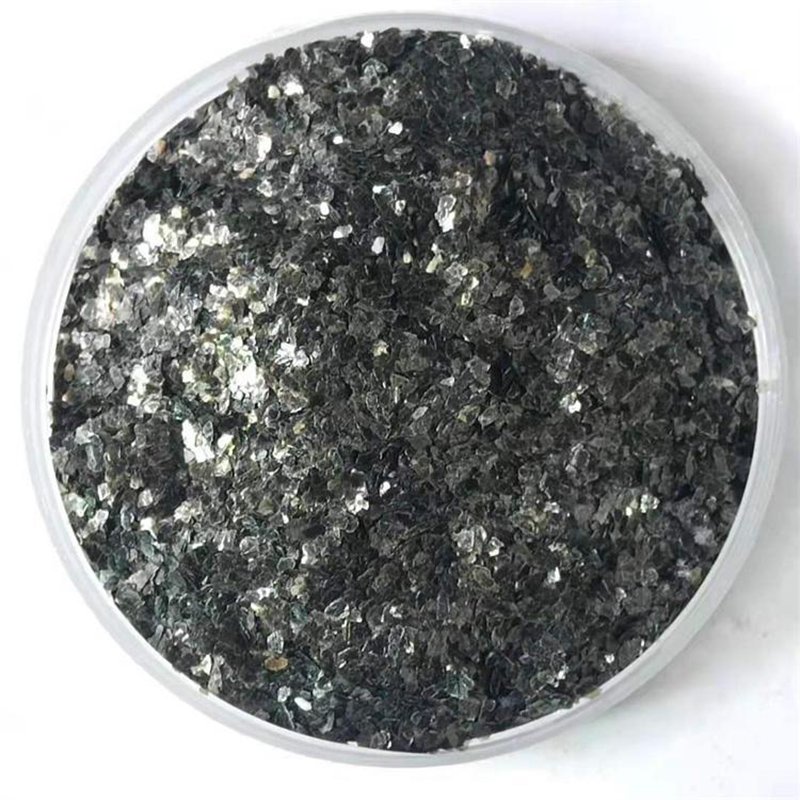
Product Information:
- Name: Black Biotite Mica Flakes
- Appearance: Natural phlogopite has two colors: dark color and light color. General phlogopite is in yellow, dark brown or black, glass-luster, cleavage surface often shows pearls or submetallic luster.
- Features: Characteristics of higher insulation and higher resistance, lower electrolyte cost, arc resistant, corona resistant and also it is hard and has higher mechanical strength, higher temperature resistance as well as acid & alkali-resistance.
- Available sizes: 1-2mm, 1-3mm, 2-4mm, 3-6mm, 20mesh, 40mesh, 60mesh, 100mesh.
- Applications: Phlogopite mica are widely used in radio industry, aircraft industry, production of electrical machinery, coating, paint, plastic, linoleum, paper making, oil-drilling, decoration and cosmetics etc.
Biotite
Biotite is a common phyllosilicate mineral within the mica group. The high content of iron ions gives it a dark hue. It is sometimes called “iron mica” because it is more iron-rich than phlogopite. It is also sometimes called “black mica” as opposed to “white mica” (muscovite) – both form in some rocks, and in some instances side-by-side.
Biotite is the most common mica mineral and also known as black mica, a silicate mineral in the common mica group. Approximate chemical formula K (Mg, Fe). It can be found in massive crystal layers weighing several hundred pounds. It is abundant in metamorphic rocks (both regional and contact), pegmatites, and also in granites and other invasive magmatic rocks. Biotite usually occurs in brown to black, dark green variety.
It is a name used for a range of black mica minerals with different chemical compositions but with very similar physical properties. These minerals are usually indistinguishable from each other without laboratory analysis. There is a small list of biotite minerals that were down.
Crystallography: Monoclinic; prismatic. In tabular or short prismatic crystals with prominent basal planes. Crystals rare, frequently pseudo rhombohedral. Usually in irregular foliated masses; often in disseminated scales or in scaly aggregates.
Black Biotite Mica Flakes
Wide Applications of Biotite:
Biotite Black Mica Flakes can be widely used in building materials industry, fire industry, fire extinguishing agent, welding rod, paper, asphalt and other manufacturing industries, can also be used for soil improvement, livestock feed.
- as insulating material in the electronics industry,
- in addition to plasters and paints
- after pulverization used as a non-stick surface coating on asphalt shingles and rolled roofing
- for products decorating
- for collection purposes
Sizes of Natural Mica:
- Mica Flakes: 1-2mm, 1-3mm, 2-4mm, 3-6mm, 20mesh, 40mesh, 60mesh, 100mesh.
- Mica Powder: 200mesh, 325mesh, 400mesh, 600mesh, 800mesh, 1000mesh, 1250mesh, 2500mesh, etc.
- Mica Sheet: Length≤12cm, width≤12cm, Thickness: 0.5mm, different size.
- Note: Other sizes can be customized according to your demands.
Basic Properties of Biotite
Physical Properties
| Chemical Classification | Dark mica |
| Color | Black, dark green, dark brown |
| Streak | White to gray, flakes often produced |
| Luster | Vitreous |
| Diaphaneity | Thin sheets are transparent to translucent, books are opaque. |
| Cleavage | Basal, perfect |
| Mohs Hardness | 2.5 to 3 |
| Specific Gravity | 2.7 to 3.4 |
| Diagnostic Properties | Dark color, perfect cleavage |
| Chemical Composition | K(Mg,Fe)2-3Al1-2Si2-3O10(OH,F)2 |
| Crystal System | Monoclinic |
| Uses | Very little industrial use |
Chemical Composition:
| Silicon dioxide | SiO2 | 41.58% |
| Alumina | Al2O3 | 11.76% |
| Potassium oxide | K2O | 10.86% |
| Ferric oxide | FeO | 8.29% |
| Magnesium oxide | MgO | 23.24% |
| Loss on ignition | H2O | 3.64% |
Packing & Delivery

Mica Manufacturer Warehouse 
Mica Flakes Ton Bag Packaging 
Mica Flakes 25kg Bag Package
- Package Details: Generally, we use 25kg/Bag or 550kg to load the mica. 15 tons can be loaded into one 20FCL.
- Port: Tianjin Port.
- Lead Time: 7-25 days after payment according to your order quantities.
- Usual MOQ: One 20FCL container. If you need a small amount, we can send you by air or by LCL without MOQ limitation.

